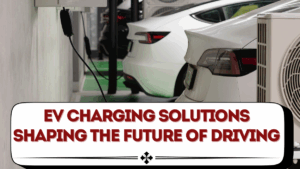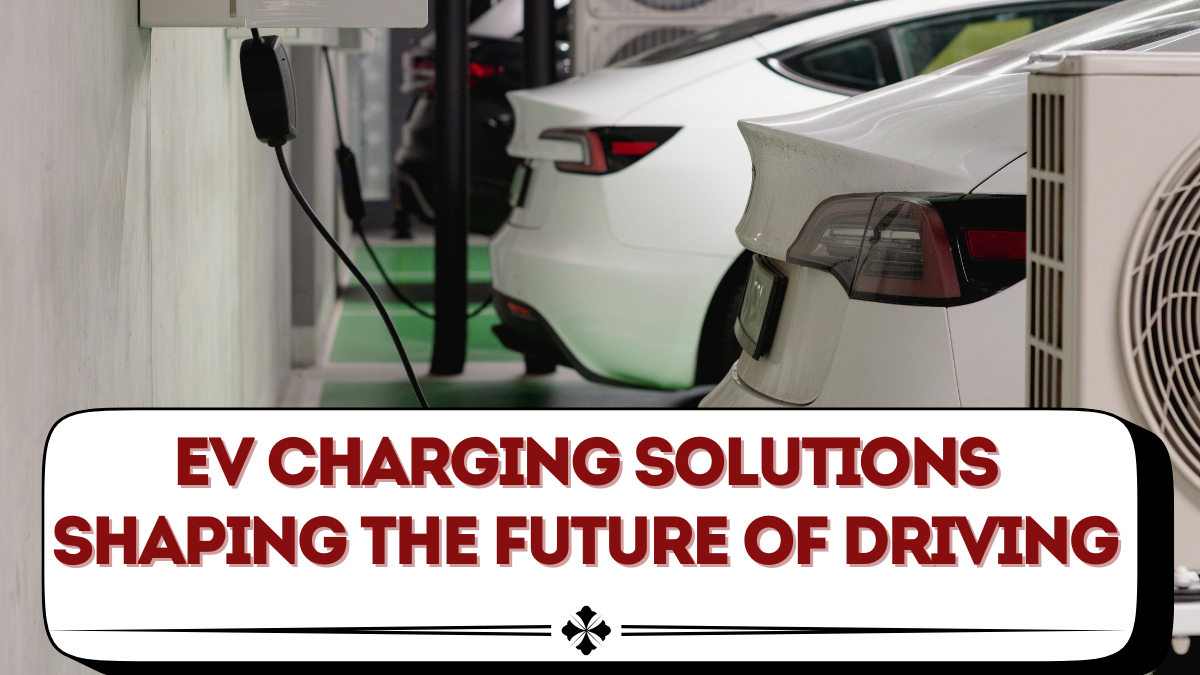The electric vehicle (EV) revolution is accelerating, but one challenge remains front and center—charging. While EV adoption is surging worldwide, the true driver of convenience and confidence lies in EV charging solutions. In 2025, charging technologies are advancing at an unprecedented pace, with ultra-fast chargers, wireless systems, and smart grid integration making EVs more practical for daily commutes and long-distance travel.
This article explores the most important EV charging innovations shaping mobility, the infrastructure growth supporting them, and how these solutions are making EVs more appealing than ever.

The Need for Advanced Charging
For years, one of the biggest hurdles for EV adoption has been range anxiety—the fear of running out of power without access to a charging station. Traditional charging methods often required hours to replenish batteries, making EVs impractical for long trips.
Now, with rapid progress in ultra-fast charging and nationwide infrastructure, EV charging is becoming as seamless as filling up a petrol tank. Governments and private players are working together to ensure that charging stations are widely available, user-friendly, and cost-efficient.
Types of EV Charging Solutions
1. Level 1 Charging (Basic)
-
Uses a standard 120V household outlet.
-
Provides 3–5 miles of range per hour.
-
Best for overnight charging but too slow for heavy users.
2. Level 2 Charging (Home & Public)
-
Operates on 240V power supply.
-
Delivers 20–60 miles of range per hour.
-
Common in homes, workplaces, and shopping centers.
3. DC Fast Charging (Ultra-Fast)
-
Provides 150–350 kW of power.
-
Can recharge 80% of a battery in 20–30 minutes.
-
Ideal for highways and long-distance travelers.
4. Wireless (Inductive) Charging
-
Uses magnetic induction pads under vehicles or in driveways.
-
Provides hassle-free, cable-free charging.
-
Currently limited in speed but rapidly improving.
5. Vehicle-to-Grid (V2G) Technology
-
Allows EVs to not only consume but also send power back to the grid.
-
Helps stabilize electricity supply during peak demand.
Comparison of Charging Options
| Charging Type | Speed | Best For | Cost | Convenience |
|---|---|---|---|---|
| Level 1 | Very Slow | Overnight, low usage | Very Low | Easy, but impractical for daily driving |
| Level 2 | Medium | Daily home/workplace | Moderate | Most common, practical |
| DC Fast | Very Fast | Long trips, highways | Higher | Extremely convenient |
| Wireless | Medium (improving) | Home/urban luxury use | Higher | Hassle-free |
| V2G | Variable | Smart homes, energy saving | Moderate–High | Innovative, dual-use system |
Innovations in EV Charging
Ultra-Fast Chargers
Companies are deploying 350 kW and above chargers that can fully charge EVs in minutes. This makes long-distance EV travel far more practical.
Wireless Charging
Inductive charging pads are becoming available in public parking spaces, luxury residences, and even taxis, making charging seamless and automatic.
Solar-Powered Stations
Sustainable charging stations powered by solar panels are reducing the carbon footprint of EV infrastructure.
Smart Charging Networks
Apps and IoT-based systems allow EV owners to find, reserve, and pay for charging slots, preventing wait times and improving efficiency.
Battery-Swapping Stations
Instead of waiting for a charge, some companies are experimenting with battery-swapping technology, enabling EVs to exchange depleted batteries for fully charged ones within minutes.
Global Expansion of EV Infrastructure
Governments worldwide are pushing to expand EV charging stations:
-
United States – Billions invested in highway charging corridors.
-
Europe – Mandatory EV charging points in new buildings and offices.
-
India – FAME-II program supporting nationwide charging growth.
-
China – Leading the world with millions of charging stations and battery-swapping networks.
The rise of EV charging solutions is directly tied to government policies, private partnerships, and consumer demand for more reliable access.
Challenges in EV Charging
Despite progress, hurdles remain:
-
Cost of Fast Chargers – Installation and grid upgrades are expensive.
-
Uneven Distribution – Rural areas still lack adequate charging infrastructure.
-
Battery Compatibility – Not all EVs can handle ultra-fast charging speeds.
-
Grid Strain – Growing EV demand requires smarter energy distribution.
These challenges highlight the need for innovation in both hardware and energy management systems.
Benefits of Modern Charging Solutions
-
Reduced Charging Time – Ultra-fast charging makes EVs suitable for long journeys.
-
Convenience – Wireless charging eliminates plug-in hassles.
-
Eco-Friendly – Solar-powered stations and V2G integration support sustainability.
-
Cost Savings – Off-peak charging helps drivers save on electricity bills.
-
Wider Adoption – Better infrastructure boosts consumer confidence in EVs.
FAQs
What is the fastest EV charging option in 2025?
DC ultra-fast charging, delivering 150–350 kW, can recharge most EVs in under 30 minutes.
Is wireless EV charging widely available?
Not yet, but it’s expanding in luxury markets and select urban spaces, with rapid improvements in efficiency.
Can EVs supply power back to homes?
Yes, through vehicle-to-grid technology, EVs can provide backup power during outages or feed electricity back to the grid.
How much does it cost to install a home EV charger?
A Level 2 charger installation typically costs between $500–$1,500, depending on electrical upgrades needed.
Will battery-swapping replace charging?
Battery-swapping is gaining traction in some regions like China, but charging is likely to remain the global standard.
Conclusion
The future of EV charging solutions lies in speed, convenience, and sustainability. With ultra-fast chargers reducing charging times, wireless systems adding ease, and smart networks optimizing efficiency, EV ownership is becoming more attractive than ever. While challenges remain in cost, grid management, and distribution, global investment ensures that by 2029, charging an EV could be faster and more seamless than fueling a traditional car.
Click here to know more.
